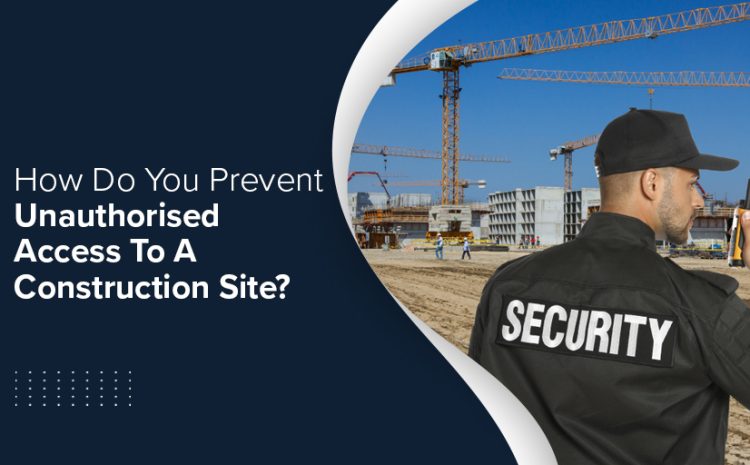
How Do You Prevent Unauthorised Access To A Construction Site?
Construction Sites are dynamic environments with multiple hazards and potential risks. One significant concern for construction project managers and safety officers is preventing unauthorized access to the site. Unaware of the dangers that lurk within, unauthorized visitors pose a severe threat to their safety and the overall integrity of the construction project. In this blog, we’ll check out strategies and considerations to effectively prevent unauthorized access to your construction site, ensuring the safety of all.
Understanding the Risks
Unauthorised visitors to a construction site may be unfamiliar with or have no understanding of, the safety risks they may be exposed to. These risks can include:
- Falls from buildings, scaffolding, or open excavations.
- Protruding reinforcement bars.
- Collapsing materials cause suffocation or crushing.
- Contact with hazardous substances and plants.
Construction project managers and safety officers, known as ‘persons conducting a business or undertaking’ (PCBUs), have a legal obligation to secure the construction site from unauthorised access. This duty involves a thorough risk assessment to identify potential health and safety risks arising from unauthorised access.
Assessing the Risk
The requirement to secure a construction site varies depending on factors such as location and proximity to places frequented by children, schools, parks, and shopping precincts. PCBUs must consider:
- The risks to the health and safety of unauthorized individuals.
- The likelihood of unauthorised access occurring.
- How to isolate hazards within the workplace in case unauthorised access cannot be prevented.
While some sites may require stringent security measures due to high risk, others in remote areas might have more flexible security requirements.
Types of Fencing And Security Measures
A crucial aspect of preventing unauthorised access is installing adequate fencing. Here are some considerations:
- Height and Deterrence: Fencing should be high enough to deter entry and challenging to climb. It should also be difficult to crawl under.
- Stability: Fences must be stable and able to withstand anticipated loads, including wind forces and attempts to scale them.
- Materials: Use rigid materials for fencing, such as a sturdy fence, to ensure security. Bunting or plastic strips are insufficient.
- Gates: Ensure that gates do not represent weak points in the security system and provide the same level of security as the fence.
- Existing Boundaries: Existing boundary fences can be acceptable if they prevent access to the construction site.
Signage
Clearly, visible signage is essential to notify potential intruders of security measures. Signage should include the principal contractor’s name, contact person’s name, and phone numbers, including an after-hours number. Even on projects valued at less than $250,000 (where regulations do not require signage), displaying signage is good practice.
Additional Security Measures
Depending on the specific hazards on your construction site, consider these additional security measures:
- Chemical Storage: Secure chemicals in appropriate storage lockers.
- Utilities/Services: Isolate and secure utility services at their source.
- Fall and Falling Objects Prevention: Secure access to the structure under construction, barricade or cover excavations, and remove ladders and access points.
- Plant Security: Ensure mobile plant and tower cranes are properly secured and immobilised when not in use.
- Scaffold Safety: Erect warning signs, remove loose materials, and ensure scaffolds are inspected and maintained.
- Traffic Control: Plan for traffic control when the site is closed, securing barriers and road plates.
- Ongoing Checks: Schedule regular site checks to ensure security measures are in place and effective.
Conclusion
By implementing these security measures, construction project managers can significantly reduce the risk of unauthorised access, ensuring the site’s safety and compliance with regulatory requirements. Also, remember that each construction site is unique, and security measures should be tailored to the specific risks and challenges it presents. But you can rely on Guard1 Security to secure your construction site! They offer Security Guards for Construction Sites who are also well-versed and equipped with modern access control tools and monitoring equipment to keep track of intruders and prevent damage, theft, and loss.

